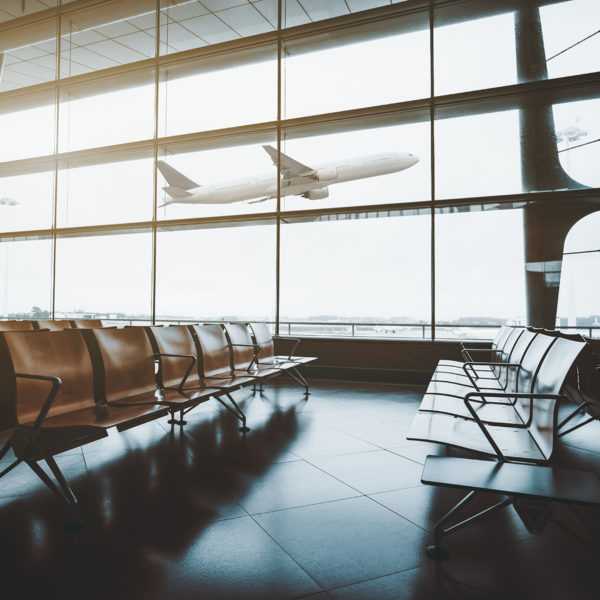Holiday Shoppers Tighten Their Belts – and Look Homeward


For the 2019 holiday season, New York mom Jennifer Merritt embraced the oft-touted concept to "collect moments, not things," and gave her children an experience instead of stuff. Merritt and her two children traveled to Florida to visit her grandfather and shared time at Universal Studios and the beach.


They rented a Ford Mustang convertible while they were there and enjoyed the salt air, fresh breezes, and the Florida sunshine. “We had the time of our lives,” she recalls. “I got each kid a few small things online, too.”
This year, Merritt’s holiday plans, like those of so many others, have an arguably muted and less adventuresome tone. Buying things, rather than investing in potential memories, presents a dilemma: On the one hand, having more traditional presents is probably safer than traveling would be, but on the other, such gifts run the risk of being overlooked or devalued as the family pines for last winter’s days in the sun. “I had planned to do another experience instead of presents this year…but COVID,” she says.
COVID-19 has impacted nearly every facet of daily living, from the way we interact with others to where and how we work, and as the late fall days pass by, it is already impacting the Holiday 2020 shopping season. Whether it’s for personal safety, financial reasons related to COVID-19, or out of concern about shipping, shoppers are tackling their holiday lists differently this year.
Getting an Early Start
A grumble often echoed in “normal” years is about retailers pushing anything related to winter holidays before Halloween has even come and gone. In past years, the griping about prematurely trading pumpkins for peppermint resonated among consumers, but this year, with its slow drip of days and months, many consumers have embraced a “go for it” attitude. An informal social media audit shows that consumers and businesses alike are putting up holiday decorations early this year.
Consumer shopping habits have also been significantly shaped and influenced by the year’s circumstances. Amazon kicked off Holiday 2020 shopping with a bang by launching Prime Day, which usually occurs in the summer months, with holiday-themed promotions in mid-October. While traditional Black Friday participants, such as Best Buy, Walmart, and Target plan to participate in Black Friday-related promotions, they joined Amazon to promote their early holiday-themed sales during “Prime” time. Amazon later reported the event “surpassed $3.5 billion in sales – a nearly 60 percent year-over-year increase” alone for its third-party sellers.
Other harbingers of the winter holidays came early as well. Department store Macy’s started touting “Black Friday” before Veteran’s Day. Both Starbucks and Dunkin’ began selling their pumpkin-spice-flavored and other seasonal drinks before September, and winter-themed cups and festive foods have been available for weeks. “This year, it looks like all the holidays are just blending together,” one marketer noted. “Back-to-school stuff was still around at Halloween, and Christmas decorations were on the shelves with jack-o-lanterns. Just more 2020 weirdness.”
Tackling the Spendy Factor
Consultancy Deloitte’s annual holiday survey, released in October, reaffirmed shoppers’ COVID-related anxiety. Deloitte reported shoppers expect to spend $1,387 per household, down seven percent from 2019. Like Merritt, consumers are shifting their spend away from travel this year – by some 34 percent, according to the survey. Instead of racking up (or cashing in) frequent-flyer miles, shoppers are looking at more home-based spending, signaled by a rise in non-gift items, including home furnishings and seasonal décor – 12 percent compared to last year.
The pandemic presents a new dilemma for in-store merchants as well as shoppers. Traditionally, the undeniable charm of downtown destinations, with their windows dressed and trimmed, or malls and department stores offering a visit to Santa, can typically melt even the grinchiest of hearts. But, worry about crowds has spilled over into two distinct yet pressing potential pain points: navigation of physical storefronts and managing a glut of bottlenecked online shipping.
Deloitte found that 51 percent of survey participants said they felt anxiety about shopping in-store during the holiday season due to COVID-19. Keeping it close to home was the preferred method of 65 percent of respondents, while 48 percent preferred to shop at stores located outside of malls. Even so, 65 percent said they liked to shop online to avoid potential crowds. According to Deloitte, consumers planned to spend an average of $892 online compared to $390 in-store this year. In 2019, Deloitte found that shoppers planned to spend 59 percent of their $1,496 holiday budget online while 36 percent of their budget was earmarked for in-store shopping. Shoppers also planned to spend $205 on average to entertain at home this year, flat from last season, and $487 on gifts and gift cards or certificates, down five percent compared to last year.
To Ship or Not to Ship?
Carrie McCombs has always enjoyed shopping for the holidays and typically begins her holiday shopping in early November, hitting multiple department stores depending upon their deals and promotions. This year, she switched gears and started her holiday shopping just after Prime Day. She also opted to buy everything online due to a fear of risking exposure to COVID-19. “I ordered everything at the beginning of the month because all I’ve been hearing is that there will be a delay in deliveries due to growing demands.”
In October, Salesforce sounded the shipping alarm when it announced that digital holiday sales this year could rise to all-time highs, “and lead to strained shipping capacity as retailers grapple with the impact of the COVID-19 panic,” wrote Salesforce. In the same report, Salesforce also forecast 10 percent of sales that typically occur during Cyber Week in November would instead occur in October. Notably, the holiday season’s impact on shipping capacity is expected to exceed five percent, according to Salesforce, who said that nearly 700 million packages face potential shipping delays.
The holiday logistics of crowds, shipping delays, and beating crowds while avoiding COVID aren’t insurmountable for shoppers like McCombs and Merritt. To tackle her shopping and create some magic for her family, Merritt took advantage of this year’s Amazon Prime Day and plans to look into virtual Airbnb experiences.
“I will try to go to some local places before COVID shuts down our lives again and round out with some online,” she says. But she admits it’s no substitute for going to Florida. “I’m sad we can’t go see my grandpa again.”

